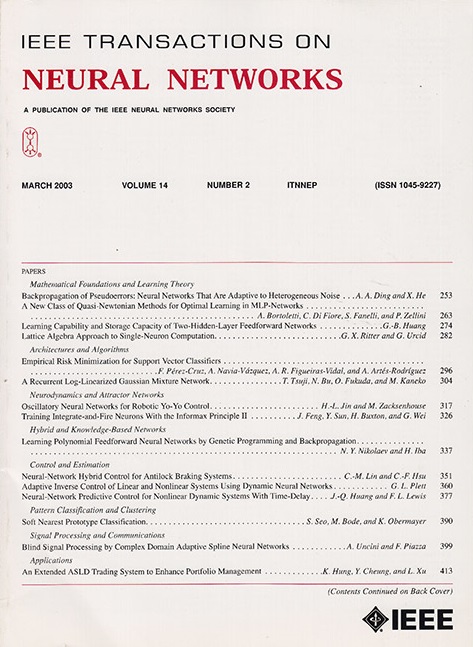Spatial-Temporal Diffusion Model for Matrix Factorization.
IF 8.9
1区 计算机科学
Q1 COMPUTER SCIENCE, ARTIFICIAL INTELLIGENCE
IEEE transactions on neural networks and learning systems
Pub Date : 2025-09-16
DOI:10.1109/tnnls.2025.3605215
引用次数: 0
Abstract
Matrix factorization (MF) is a fundamental problem in machine learning, which is usually used as a feature learning method in various fields. For complex data involving spatiotemporal interactions, MF that only handles 2-D data will disrupt spatial dependence or temporal dynamics, failing to effectively couple spatial information with temporal factors. According to Markov chain principle, the spatial information of the present time is related to the spatial state of the previous time. We propose a spatial-temporal diffusion model for MF (STDMF), which uses graph diffusion to couple spatial-temporal information. Then, MF is used to learn the joint feature of data and spatial-temporal diffusion graph. Specifically, STDMF utilizes the graph diffusion with physical laws to generate spatial-temporal structure information. It obtains the underlying core structure of complex systems from a global perspective, which enhances the generalization ability of MF in noisy time-series data. To learn the lowest rank subspace of MF in time-series data, STDMF uses structural learning to constrain the rank of the learned features. Finally, STDMF is applied to clustering and anomaly detection of dynamic graph. The effectiveness of this method is verified by sufficient experiments, especially for noisy data.矩阵分解的时空扩散模型。
矩阵分解(Matrix factorization, MF)是机器学习中的一个基本问题,通常作为一种特征学习方法应用于各个领域。对于涉及时空相互作用的复杂数据,仅处理二维数据的MF将破坏空间依赖性或时间动态,无法有效地将空间信息与时间因素耦合起来。根据马尔可夫链原理,当前时间的空间信息与前一时间的空间状态相关。本文提出了一种基于图的时空扩散模型(STDMF),该模型利用图的扩散来耦合时空信息。然后,利用MF学习数据与时空扩散图的联合特征;具体来说,STDMF利用具有物理规律的图扩散来生成时空结构信息。它从全局的角度得到了复杂系统的底层核心结构,增强了MF在有噪声时间序列数据中的泛化能力。为了学习时间序列数据中MF的最低秩子空间,STDMF使用结构学习来约束学习到的特征的秩。最后,将STDMF应用于动态图的聚类和异常检测。通过大量的实验验证了该方法的有效性,特别是对于有噪声的数据。
本文章由计算机程序翻译,如有差异,请以英文原文为准。
求助全文
约1分钟内获得全文
求助全文
来源期刊

IEEE transactions on neural networks and learning systems
COMPUTER SCIENCE, ARTIFICIAL INTELLIGENCE-COMPUTER SCIENCE, HARDWARE & ARCHITECTURE
CiteScore
23.80
自引率
9.60%
发文量
2102
审稿时长
3-8 weeks
期刊介绍:
The focus of IEEE Transactions on Neural Networks and Learning Systems is to present scholarly articles discussing the theory, design, and applications of neural networks as well as other learning systems. The journal primarily highlights technical and scientific research in this domain.
 求助内容:
求助内容: 应助结果提醒方式:
应助结果提醒方式:


